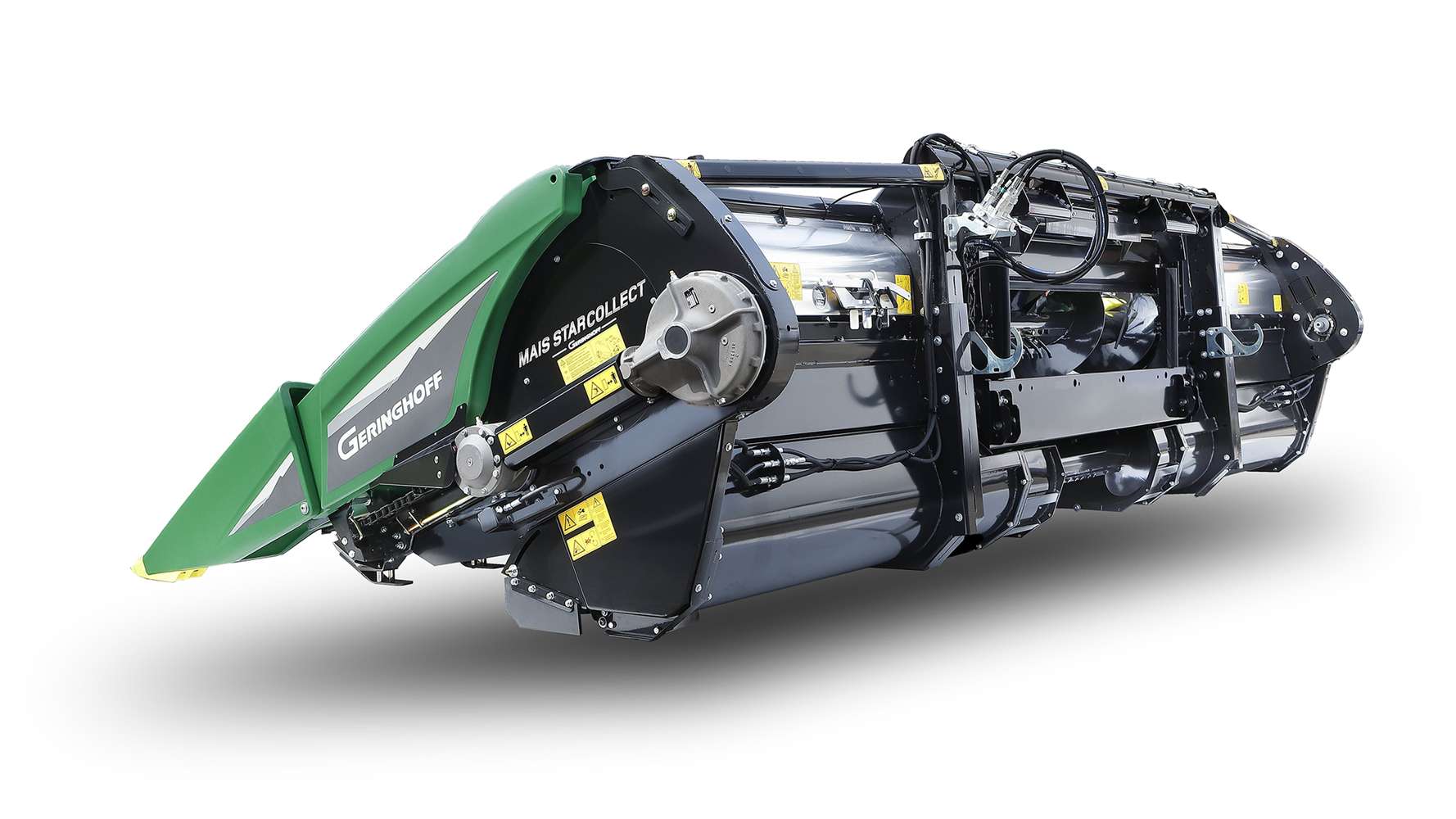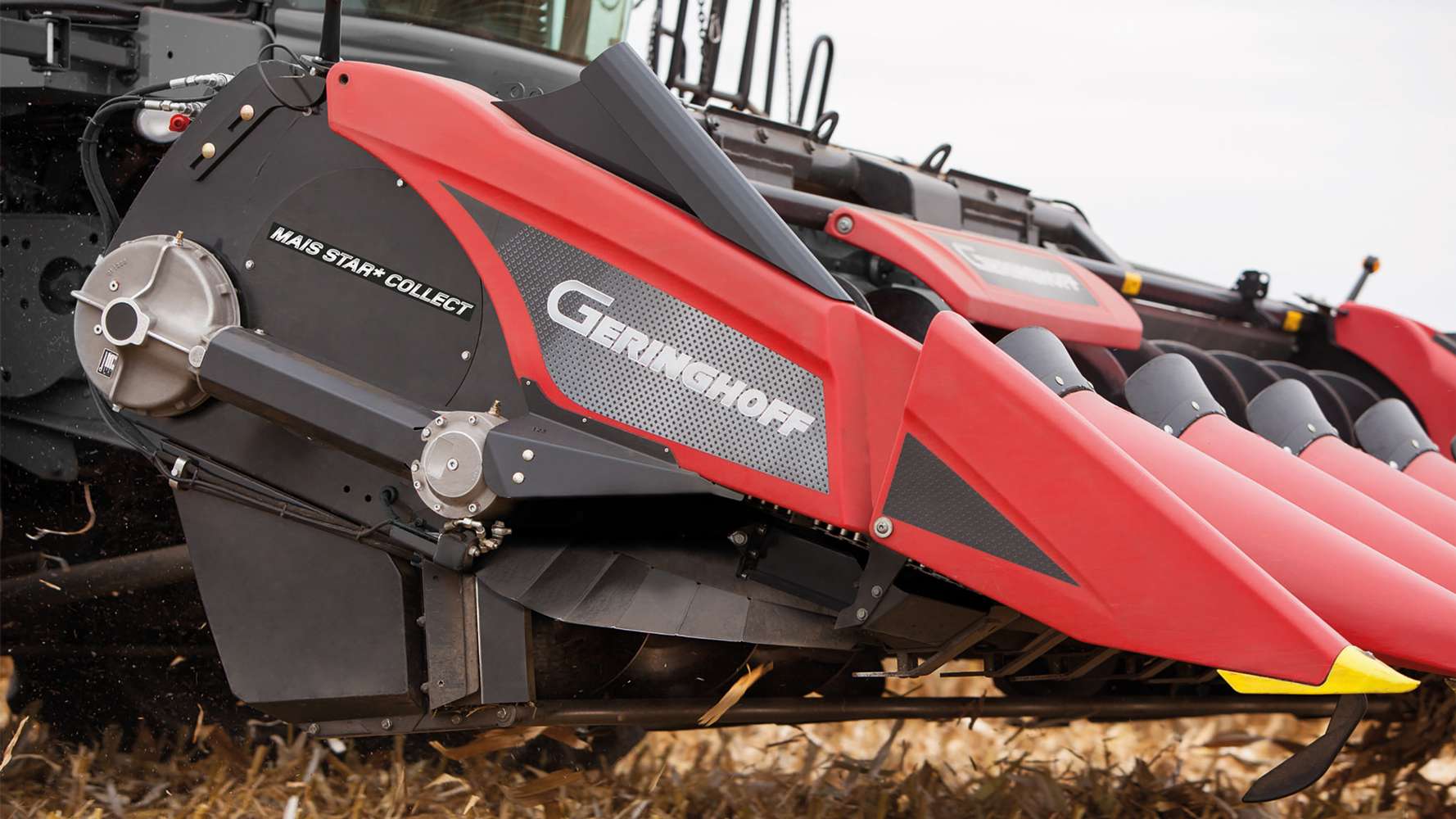Press Release
Additions to the Mais Star* Collect model range
One-pass grain maize cutting and swathing
Geringhoff expands its Mais Star* Collect series by adding nine-row and ten-row models – expanding the Mais Star* Collect cutting width to twelve rows. The row spacings currently available refer to the European standard widths of 70cm, 75cm and 80cm. Narrower row spacings are being developed at the moment. The swath merging feature for corn straw is deselectable on the move by moving the merger in and out of position. If the corn straw is not swathed in the cutting pass, the header operates like a traditional Star* Horizon header chopping the stover with the horizontal stalk chopper. When enabled, the merger groups the straw with a cross auger. The spindles and husks are swathed for collection by the following baler, forage wagon or forage harvester. The key detail is that the residues are not contaminated with soil and stones when swathed in an extra pass and so remain clean for use as silage feed or fuel for bio-gas plants. Depending on the variety and condition of the crop, up to 60% of the stover can be harvested and used as fuel or silage.
The demand for the innovative system that combines the corn head and straw merger has consistently increased over the past few years. The focus here is on using the stover and corn spindle as farmers want to make full use of the harvested material in times of less arable land and rising prices for arable land. The quality of grain maize straw is often so good that it offers extra productivity both in ecological and economic terms. Maize straw and spindles can be clamped or used to fuel digesters.
Another possibility is the use as livestock bedding or as a substitute for some of the silage maize and grass silage. In some regions it is possible to bale the maize straw and spindle mix and sell it as fuel for incinerators for electricity and heat generation.
Large quantities of maize straw often lead to problems in the crop rotation such as Fusarium infestation and an uneven release of nutrients. Therefore the removal of residues from the field is serves agronomy. The root and plant residues left in the field are sufficient to create good humus balance.


